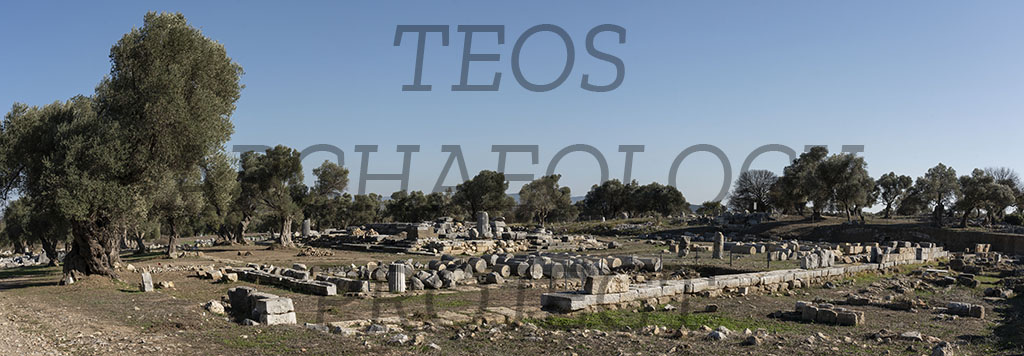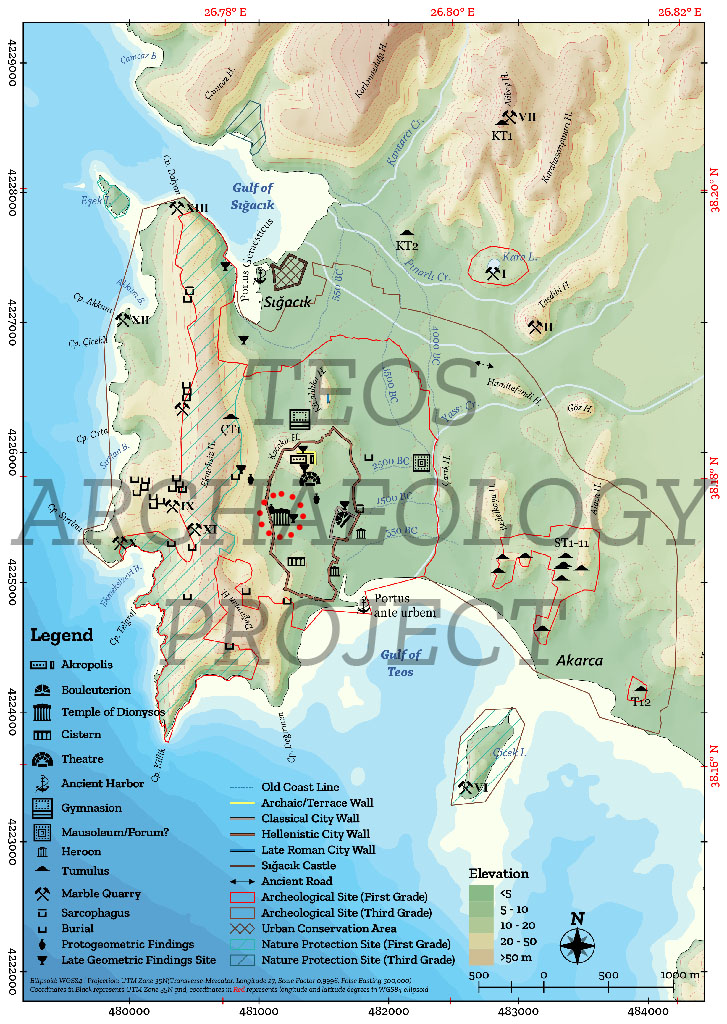
West Temenos wall of the Sanctuary (Kadıoğlu, 2021, 203, Figure 77)
The Sanctuary of Dionysus was built on the western border of the ancient city, just east of the Hellenistic Wall, on a podium formed by partly carving and partly filling a rocky piece of land in the form of east-west oriented terraces. The Temple of Dionysus has been regarded as the most important building of Teos. In his Ten Books on Architecture, Vitruvius mentioned the famous Hermogenes as the architect of the Temple of Dionysus in Teos.
It was built in the Ionic order, at the centre of a temenos, partly directly on the rocky ground. The temple cella consists of three sections: a deep pronaos, a naos, and a narrow opisthodomos. There were two columns between each of the antae of the pronaos and opisthodomos, and six columns on the short sides and 11 columns on the long sides formed the peristasis, for a total of 34 columns.
Considered by Vitruvius to be the work of Hermogenes, the hexastyle peripteral temple in Teos is described by Vitruvius as having been completed in the Hellenistic Period according to the eustyle principles. However, the possibility that not all the parts of the temple were completed during the Hellenistic period was never considered.
According to E. Akurgal, the temple must have been built in the second quatrain of the 2nd century BC. However, the existance of the inscription of III. Antiochus the Great, 222-187 BC and the dating of Hermogenes to the last quarter of the 3rd century BC, indicate the existence of the temple in this period. In addition, another inscription found in the temenos to the southwest of the temple is King III. Antiochus who was decided to worship next to Dionysus. He reports the details of the actions to be taken in honor of Antiochus and his sister Laodice. Among the religious rules regarding Laodice, there is the condition that a fountain in the agora should be dedicated to Laodice and the water flowing from this fountain should be used in the ceremonial wedding bath of the brides, especially in sacrificial ceremonies.
Answers to that and other issues like whether the construction of the incomplete parts of the Hellenistic temple and the sanctuary continued during the reigns of Emperor Augustus and Hadrian, or if it underwent extensive repairs, or whether the temple was completed in the Hellenistic Period and restored twice after being destroyed by two earthquakes, once in the mid-1st century BC and once in the late-1st century AD as suggested by Uz.
In Teos, Dionysus was unusually called by suffix Setaneios (a word used for the crop to mean belonging to this year).

Archaeological map of Teos and its surroundings (Kadıoğlu, 2021, 25, Map 4)
